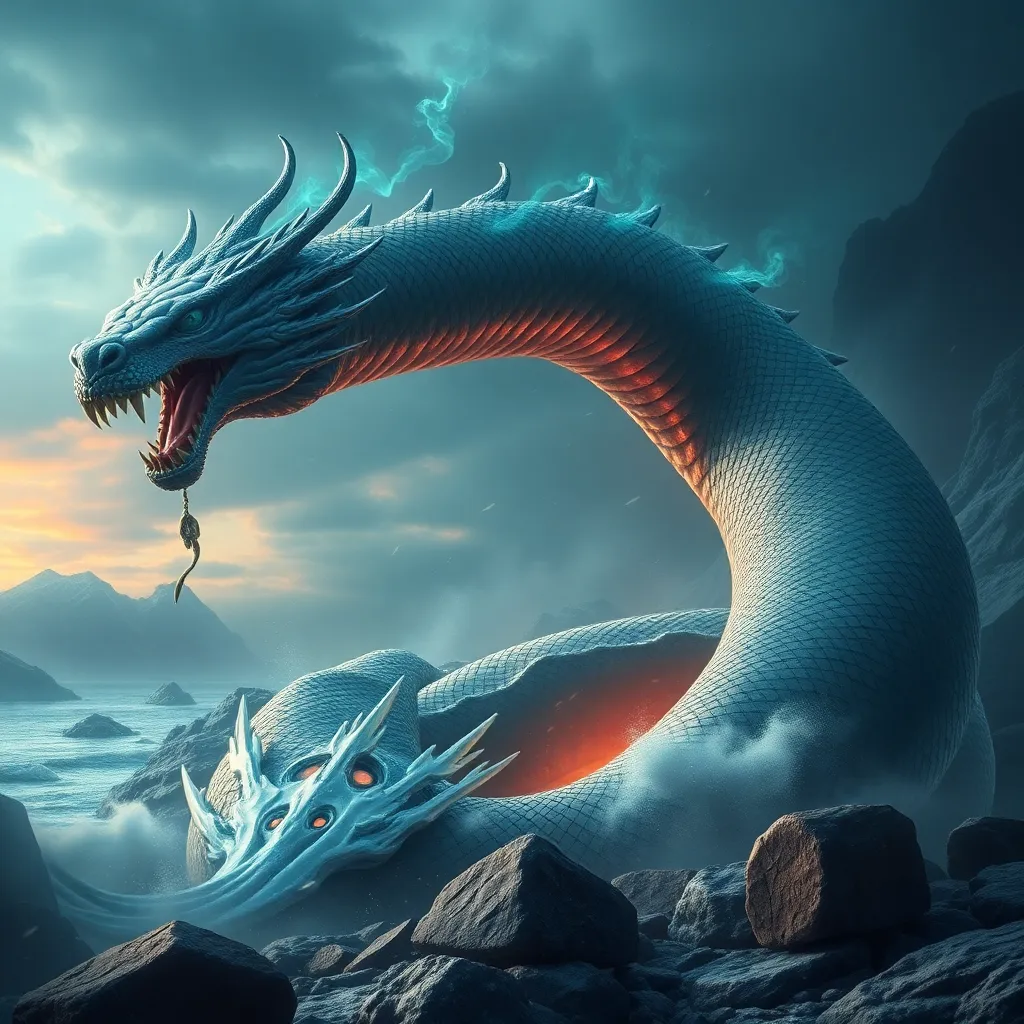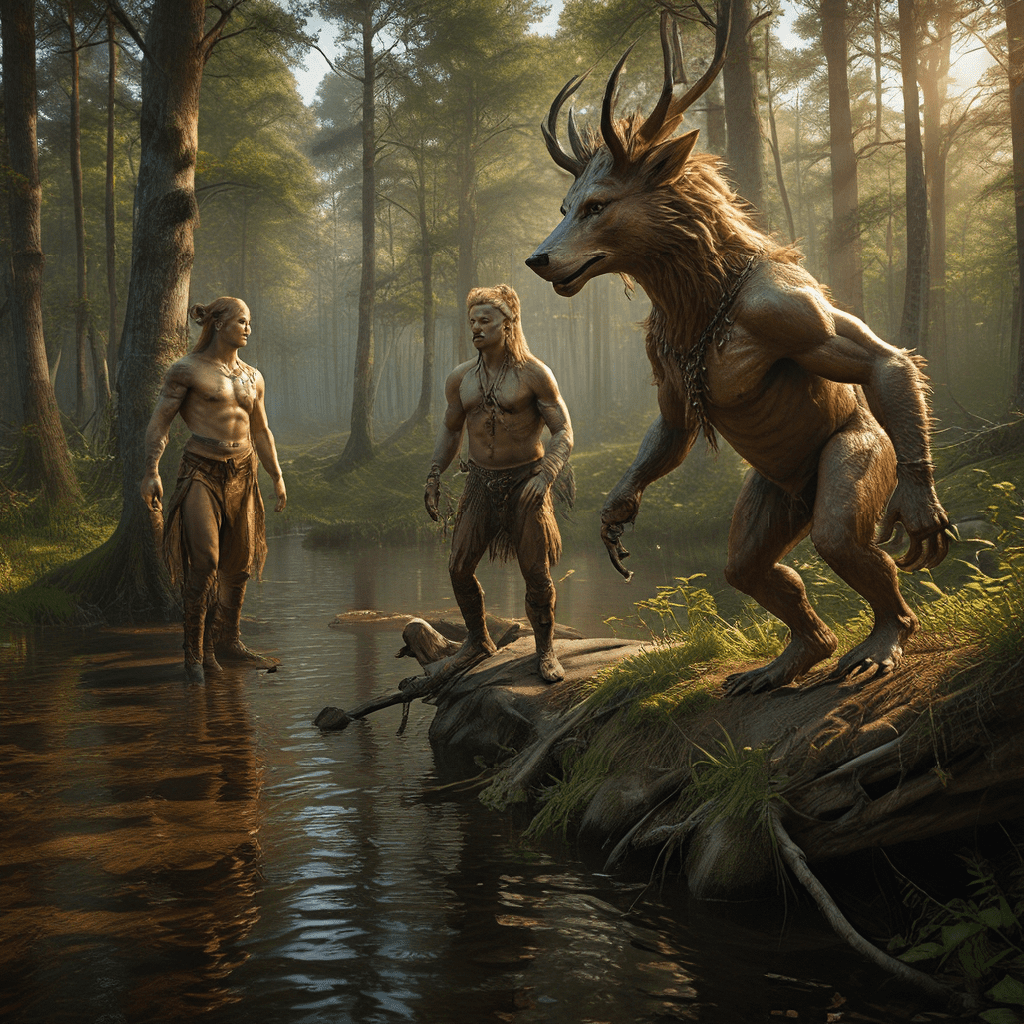Jörmungandr: The World Serpent’s Role in Ragnarok
I. Introduction
In Norse mythology, Jörmungandr, commonly known as the World Serpent, is a significant figure whose presence permeates the tales of gods and giants. As one of the children of the trickster god Loki and the giantess Angerboda, Jörmungandr is deeply intertwined with the themes of fate and destruction in Norse cosmology. The tale of Ragnarok, the end of the world in Norse belief, is particularly crucial as it marks the convergence of various mythological elements and characters, including Jörmungandr. This article aims to explore Jörmungandr’s pivotal role in Ragnarok, examining his origins, characteristics, and the broader implications of his actions within Norse mythology.
II. The Origins of Jörmungandr
A. Birth and lineage of the World Serpent
Jörmungandr’s origins can be traced back to Loki, the enigmatic trickster god, and Angerboda, a giantess associated with chaos and magic. Their union produced three monstrous offspring: Jörmungandr, Fenrir (the great wolf), and Hel (the goddess of the underworld). Each of these figures plays a vital role in the events of Ragnarok and beyond.
B. Jörmungandr’s place in Norse mythology
Jörmungandr is not merely a beast; he is a colossal representation of the ocean that encircles Midgard (Earth), which connects to various mythological narratives. His presence symbolizes the chaotic forces of nature and the balance that must be maintained within the cosmos. Positioned as an adversary to Thor, the god of thunder, Jörmungandr’s existence is a constant reminder of the struggles between order and chaos.
III. Jörmungandr’s Characteristics and Symbolism
A. Physical description and attributes
Jörmungandr is depicted as an enormous serpent capable of wrapping around the Earth, biting his own tail. This imagery, known as the Ouroboros, represents the cyclical nature of life and death. His size and strength are often described in mythological texts, emphasizing his formidable nature and the threat he poses to gods and mortals alike.
B. Symbolic interpretations of the World Serpent
- Themes of chaos and balance: Jörmungandr embodies the chaotic elements of the natural world, representing the uncontrollable forces that can lead to destruction.
- Representation of the sea and the unknown: As a creature of the ocean, he symbolizes the depths of the unknown and the mysteries that lie beneath the surface.
IV. The Prophecy of Ragnarok
A. Overview of Ragnarok events
Ragnarok is a series of events foretold to result in the death of numerous gods, the submersion of the world in water, and the rebirth of a new world. This cataclysmic battle is marked by chaos, destruction, and a restructuring of the cosmos.
B. Jörmungandr’s foretold role in the cataclysm
During Ragnarok, Jörmungandr is prophesied to rise from the depths of the ocean, initiating a fierce battle with Thor. This confrontation is symbolic of the ultimate clash between order (represented by Thor) and chaos (embodied by Jörmungandr).
C. The significance of prophecy in Norse beliefs
In Norse culture, prophecies play a crucial role in shaping destinies. The inevitability of Ragnarok and the roles that figures like Jörmungandr are destined to play highlight the belief in fate and the cyclical nature of life and death.
V. The Battle Between Thor and Jörmungandr
A. Description of the confrontation
The battle between Thor and Jörmungandr is one of the most iconic moments in Norse mythology. As the two meet, their clash is fraught with tension and significance. Thor wields his mighty hammer, Mjölnir, while Jörmungandr coils and strikes from the depths, symbolizing the chaotic forces of nature.
B. Analysis of Thor’s role as a protector
Thor, as the protector of gods and humans, represents the force of order and civilization. His battle against Jörmungandr encapsulates the struggle to maintain balance in a world threatened by chaos. Despite his strength, Thor’s victory comes at a great cost, illustrating the theme of sacrifice inherent in his role.
C. Implications of their battle for gods and humanity
The confrontation between Thor and Jörmungandr signifies more than just a physical battle; it reflects the deeper existential struggles faced by both gods and humans. The outcome of their fight is critical in determining the fate of the cosmos, highlighting the interconnectedness of all beings within the Norse mythological framework.
VI. The Death of Jörmungandr and Its Consequences
A. The aftermath of the battle
The death of Jörmungandr at the hands of Thor marks a pivotal moment in Ragnarok. While Thor may emerge victorious, he succumbs to the serpent’s venom shortly after, underscoring the themes of mortality and the cost of victory. This outcome suggests that even the strongest can fall, and chaos often prevails.
B. Symbolism of death and rebirth in Norse mythology
The death of Jörmungandr, like many other deaths in Norse mythology, signifies the end of an era but also allows for the potential of rebirth. The cyclical nature of existence is a core principle, suggesting that from destruction comes the possibility of renewal.
C. Impact on the world post-Ragnarok
After the cataclysm, a new world emerges, one that is cleansed of the chaos that once reigned. The death of Jörmungandr and the subsequent events pave the way for the rebirth of the gods and the creation of a more balanced world.
VII. Jörmungandr’s Legacy in Modern Culture
A. Influence on literature, films, and video games
Jörmungandr’s legacy extends beyond ancient texts, influencing a myriad of modern cultural narratives. From literature to blockbuster films and video games, the World Serpent appears as a symbol of chaos and strength, captivating audiences with his mythological roots.
B. The World Serpent as a symbol in contemporary discussions
In contemporary discussions, Jörmungandr often symbolizes the struggle against overwhelming odds and the inherent chaos in life. His image is frequently invoked in discussions of environmental themes, particularly regarding the oceans and the unknown depths of our planet.
C. Jörmungandr’s relevance in modern interpretations of mythology
As interest in mythology and its interpretations grows, Jörmungandr remains a prominent figure. Scholars and enthusiasts alike explore his significance, drawing parallels between ancient tales and modern existential themes.
VIII. Conclusion
Jörmungandr’s significance in Ragnarok is profound, embodying the themes of chaos, struggle, and the inevitable cycle of life and death. His confrontation with Thor encapsulates the cosmic battle that defines Norse mythology, illustrating the balance between order and chaos. The enduring nature of these myths speaks to their relevance across time, as they continue to shape narratives and inspire contemporary discussions. Jörmungandr, the World Serpent, remains a powerful symbol of the complexities of existence, echoing through the ages as a reminder of the eternal dance between creation and destruction.


